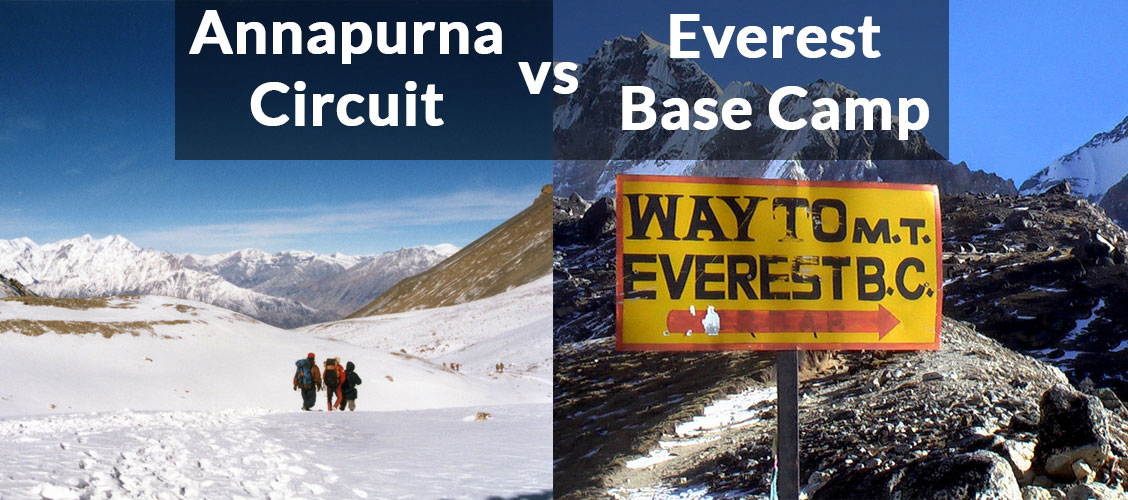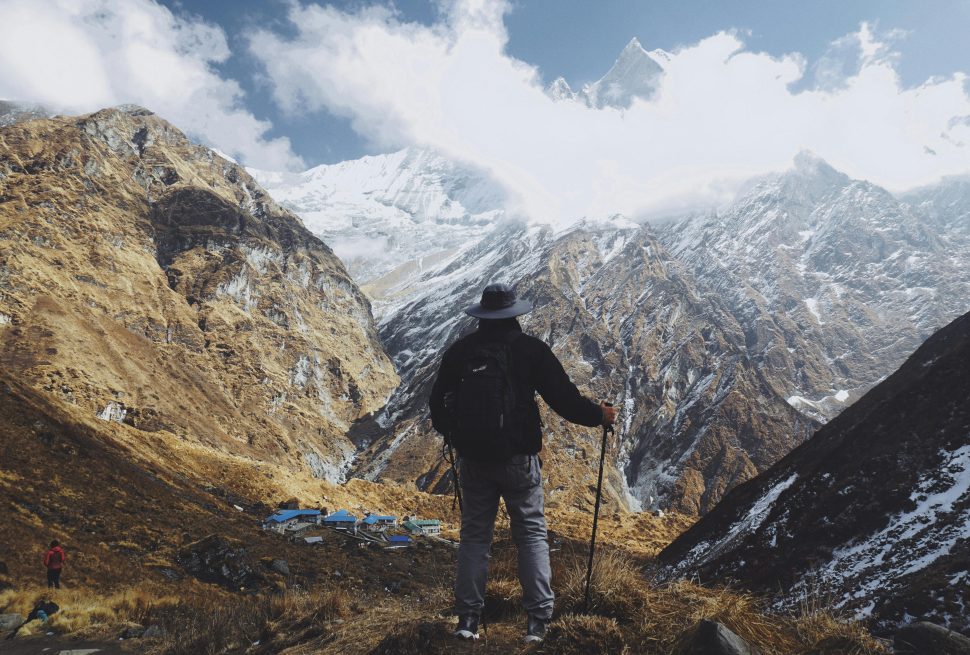Start by gaining an understanding of both treks: Annapurna Circuit Trek vs. Everest Base Camp Trek
Annapurna Circuit Trek vs Everest Base Camp Trek: The Himalayas, with their tall peaks and dramatic views, are perfect for trekking fans. Among the many trekking options in this beautiful area, the Annapurna Circuit and Everest Base Camp treks are two of the most famous and popular. Each trek offers its own unique experience with amazing scenery, rich culture, and personal challenges. This comparison will help you understand both treks better so you can make a smart choice for your adventure in 2024.
Trekking Experience and Terrain
Annapurna Circuit: A Journey Through Diversity
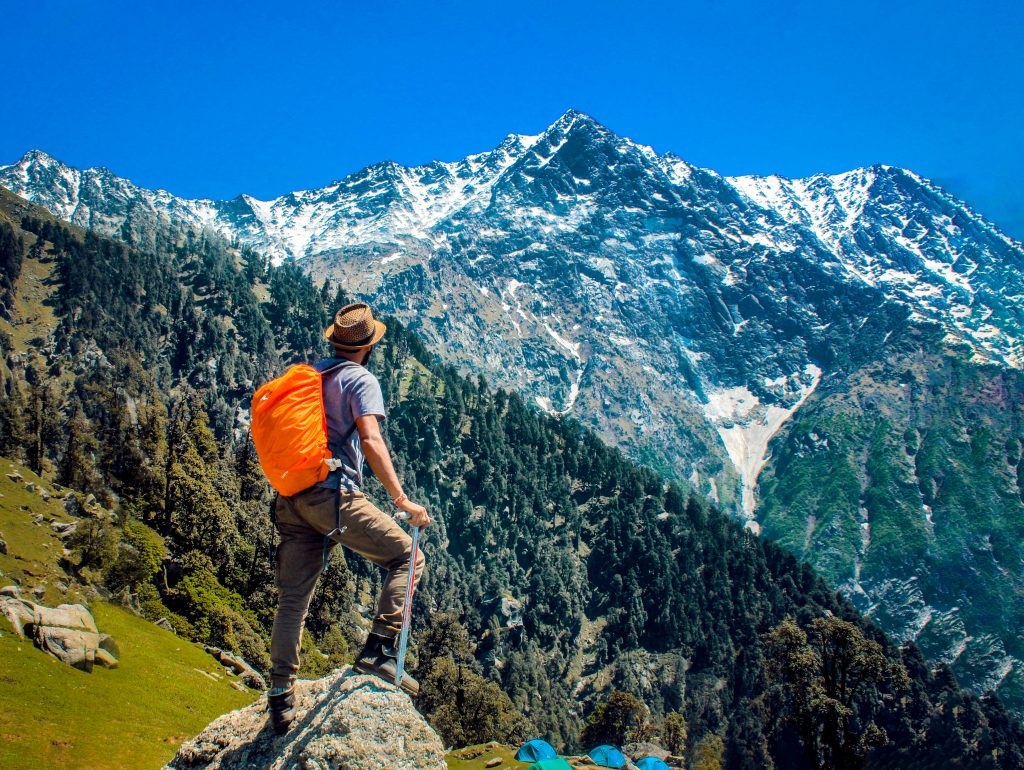
Route Overview:
The Annapurna Circuit is celebrated for its diverse and ever-changing landscapes. This classic trek forms a loop around the Annapurna Massif, providing trekkers with a comprehensive tour of the varied environments that surround this impressive mountain range. The circuit offers a unique trekking experience with a mix of subtropical forests, terraced fields, and high-altitude deserts, making it a favorite among trekkers seeking a variety of sceneries and experiences.
Altitude and Terrain:
– Highest Point: Thorong La Pass at 5,416 meters (17,769 feet)
– Typical Altitude Gain: The trek involves a gradual ascent from lower altitudes to high altitudes, with careful acclimatization strategies built into the route.
Terrain Characteristics:
– Subtropical Forests: At the lower altitudes, the trek begins in lush subtropical forests. You’ll walk through dense rhododendron and oak forests, with the opportunity to spot diverse wildlife such as langurs and Himalayan tahr. The vibrant flora and the pleasant climate at these lower elevations offer a refreshing start to the trek.
– Terraced Fields: As you ascend, you’ll encounter terraced fields of barley, rice, and potatoes. These terraces are a testament to the local agricultural practices and provide a picturesque contrast against the mountainous backdrop. The terraced landscapes are particularly stunning during the harvest seasons.
– High-Altitude Desert: Approaching Thorong La Pass, the environment transforms into a more arid, high-altitude desert. The stark, windswept landscapes provide a dramatic shift from the lush lower regions, with barren hills and sparse vegetation dominating the scenery.
Highlights:
– Poon Hill: Poon Hill is renowned for its spectacular sunrise views over the Annapurna and Dhaulagiri ranges. This viewpoint is a highlight of the trek, offering breathtaking panoramic views of the Himalayan peaks bathed in the morning light.
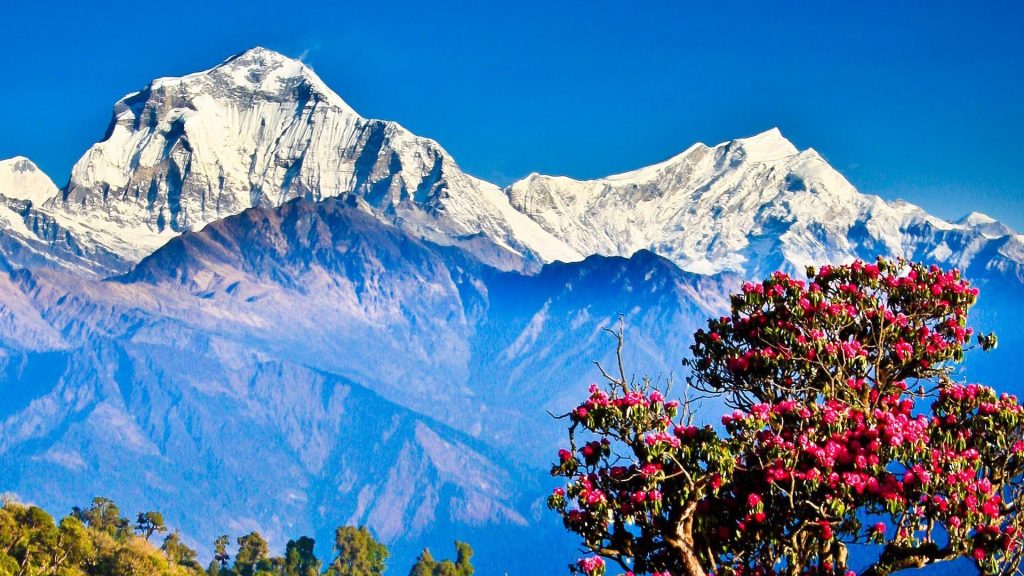
– Manang Village: Located at an elevation of around 3,500 meters, Manang is a significant cultural stop. The village is influenced by Tibetan culture and offers an opportunity for acclimatization. The local monastery and the surrounding landscapes provide a unique cultural and spiritual experience.
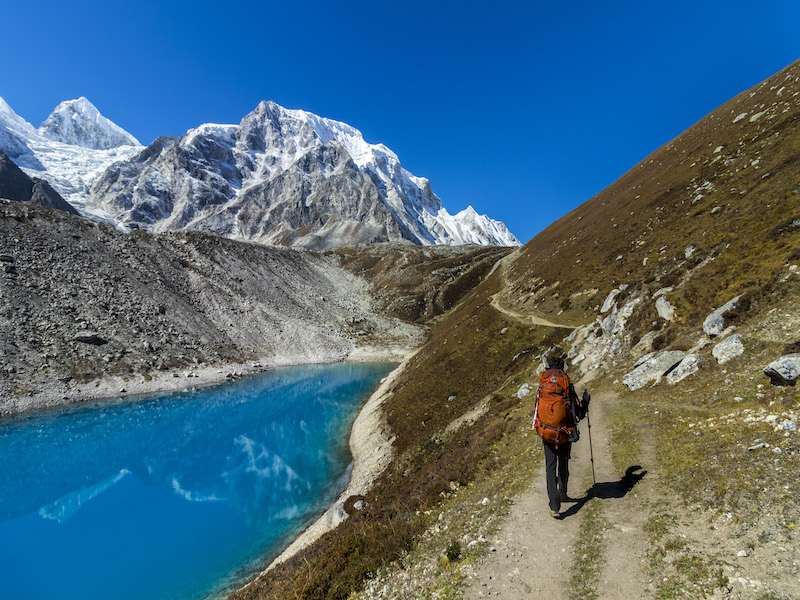
– Muktinath Temple: Situated in the Mustang region, Muktinath is a sacred site for both Hindus and Buddhists. The temple complex is known for its religious significance and its unique setting at the foot of the Himalayas.
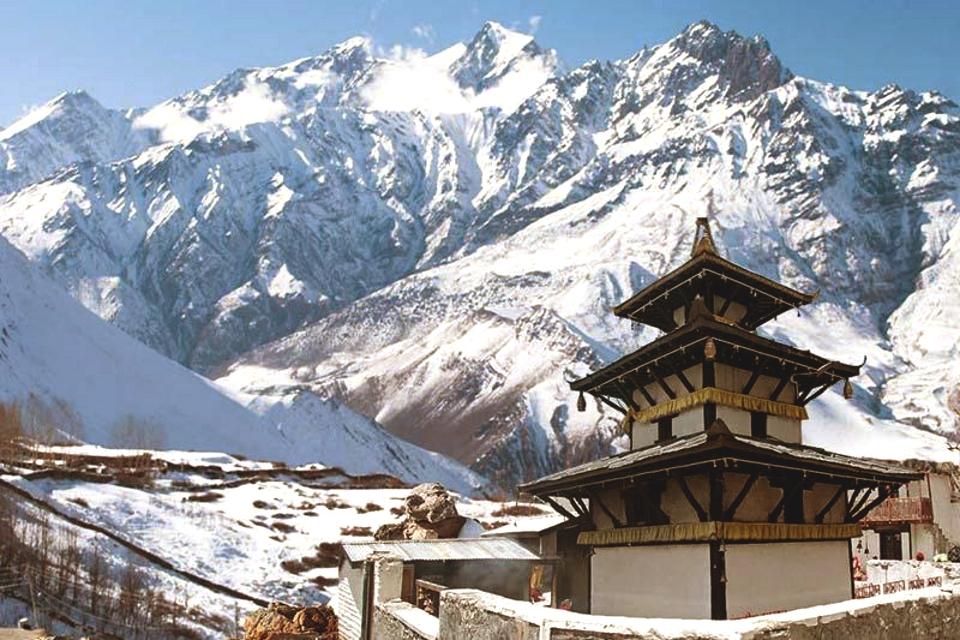
Everest Base Camp: The Ultimate High-Altitude Adventure
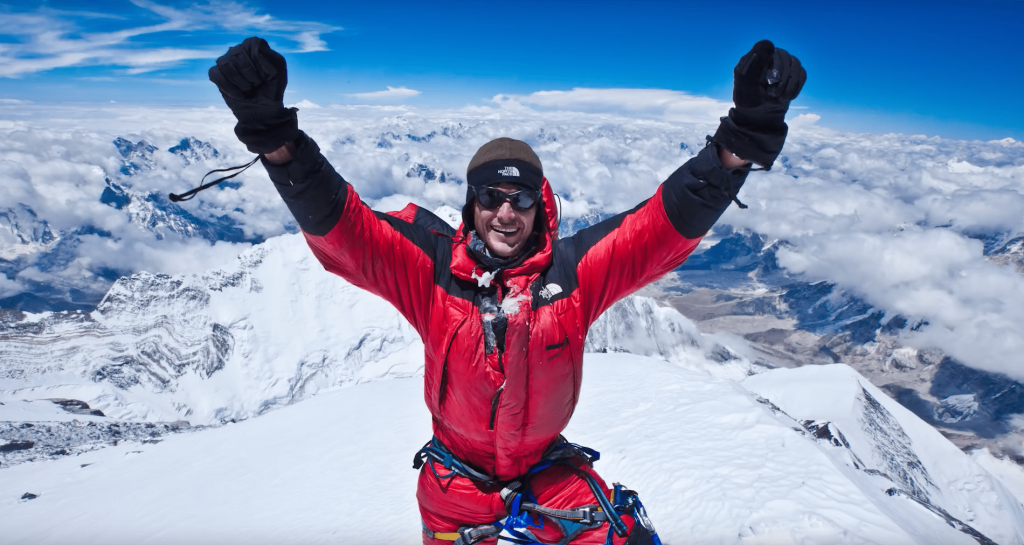
Route Overview:
The Everest Base Camp trek is often regarded as a pilgrimage for avid trekkers and mountaineering enthusiasts. It follows the Khumbu Valley to the base of Mount Everest, the highest peak in the world. This trek provides not only a physical challenge but also an immersive experience into the Sherpa culture and the history of high-altitude climbing.
Altitude and Terrain:
– Highest Point: Everest Base Camp at 5,364 meters (17,598 feet)
– Typical Altitude Gain: The trek involves a rapid ascent with shorter acclimatization periods, which can be physically demanding.
Terrain Characteristics
– Rocky Trails: The Everest Base Camp trail is known for its rugged and rocky terrain. Trekkers will navigate through boulder-strewn paths and steep ascents, requiring careful footing and stamina.
– Glaciers: The trek crosses several glaciers, including the Khumbu Glacier. These glaciers offer dramatic vistas and a sense of adventure as trekkers traverse their icy surfaces.
– High-Altitude Desert: The environment becomes increasingly barren and exposed as you approach base camp. The high-altitude desert landscape is characterized by minimal vegetation and expansive views of the surrounding peaks.
Highlights
– Namche Bazaar: A bustling Sherpa town situated at 3,440 meters. It serves as an essential acclimatization stop and offers stunning views of the surrounding peaks. Namche Bazaar is also a cultural hub, with vibrant markets, monasteries, and opportunities to explore Sherpa life.
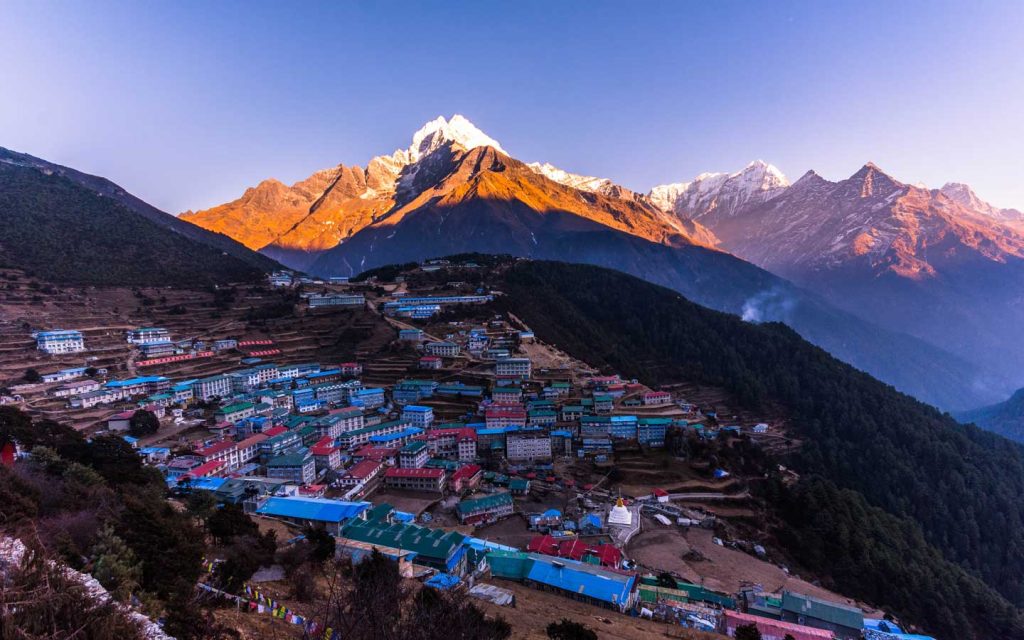
– Tengboche Monastery: Located at 3,867 meters, Tengboche Monastery is one of the most beautiful and significant Buddhist monasteries in the Khumbu region. It offers panoramic views of Everest and the surrounding peaks and provides insight into local spiritual practices.
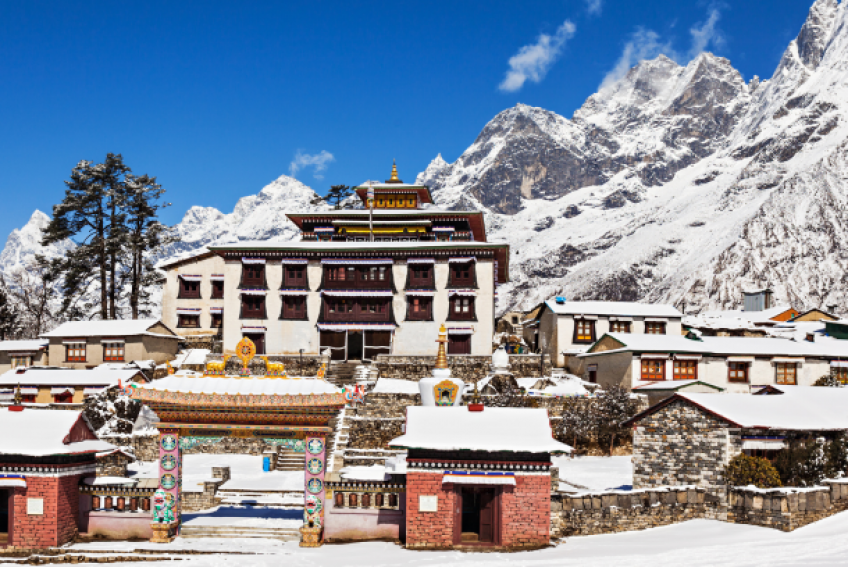
– Kala Patthar: An optional but highly recommended extension of the trek, Kala Patthar (5,545 meters) offers one of the best viewpoints of Everest. The climb to Kala Patthar provides breathtaking panoramic views of Everest, Lhotse, Nuptse, and the surrounding peaks.
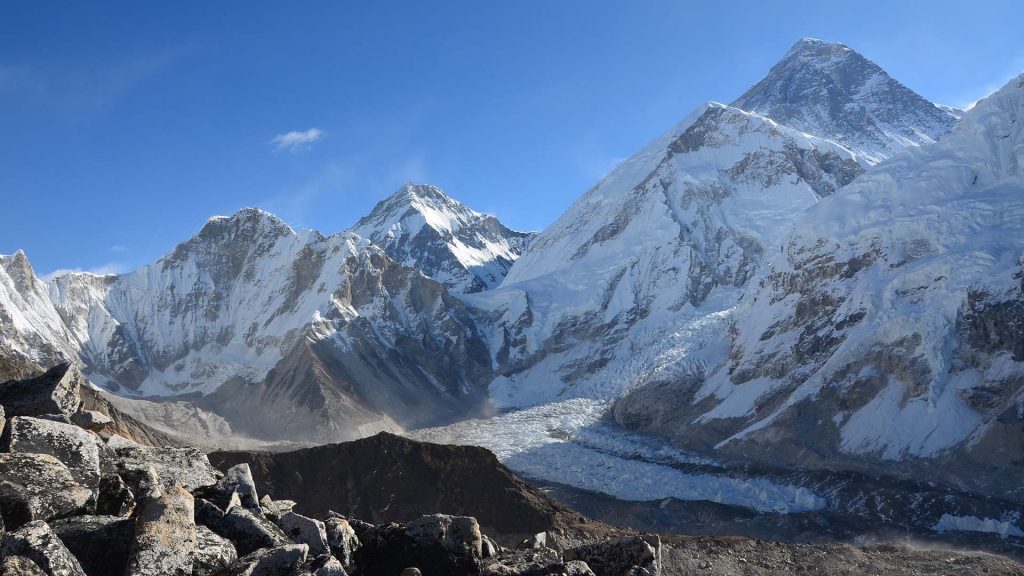
Duration and Difficulty
Annapurna Circuit: A Moderate to Challenging Trek
Duration:
The Annapurna Circuit is typically completed in 12 to 20 days. The duration can vary depending on the specific route taken, acclimatization needs, and personal pace. The extended duration allows for a more gradual acclimatization and a thorough exploration of the diverse landscapes along the trek.
Difficulty:
– Moderate to Challenging: The Annapurna Circuit is considered moderate to challenging due to the diverse terrain and the high-altitude pass. The trek involves a significant ascent to Thorong La Pass, which is the highest point on the route.
Acclimatization:
– Planned Acclimatization Days: The trek includes several designated acclimatization days, particularly in places like Manang and Yak Kharka. These acclimatization stops help reduce the risk of altitude sickness and allow trekkers to adjust to the increasing altitude gradually.
Practical Tips:
– Fitness Level: While the trek is manageable for most fit trekkers, it is recommended to engage in physical preparation prior to departure. Cardiovascular and endurance training will help in managing the varied terrain and high-altitude conditions.
– Gear and Preparation: Ensure you have appropriate trekking gear, including layers for varying weather conditions, trekking poles, and a good quality sleeping bag suitable for high-altitude conditions.
Everest Base Camp: A High-Altitude Challenge
Duration:
The Everest Base Camp trek generally takes 12 to 16 days, including acclimatization days. The trek is shorter in duration compared to the Annapurna Circuit but is known for its demanding altitude and rapid ascent.
Difficulty:
– Challenging: The trek is known for its high-altitude challenges and rugged terrain. The rapid ascent and potential for altitude sickness require a high level of physical fitness and mental preparation.
Acclimatization:
– Acclimatization Strategies: The trek includes acclimatization days in Namche Bazaar and Dingboche, but the duration of the trek means that acclimatization is more compressed compared to the Annapurna Circuit. Adequate hydration, nutrition, and gradual ascent are crucial to mitigating altitude sickness.
Practical Tips:
– Fitness Level: High-altitude trekking demands good cardiovascular fitness and stamina. Training that focuses on endurance, strength, and high-altitude adaptation is recommended.
– Gear and Preparation: Proper gear is essential, including warm clothing, high-altitude trekking boots, and a robust sleeping bag. Consider carrying supplemental oxygen if recommended by your guide.
Cultural and Scenic Highlights
Annapurna Circuit: A Cultural and Scenic Extravaganza
Cultural Encounters:
The Annapurna Circuit provides a rich tapestry of cultural experiences. Trekkers will encounter various ethnic groups, including the Gurung, Thakali, and Tibetan communities. Each village offers unique cultural insights, traditional customs, and local festivals.
– Gurung Culture: In the lower regions, you’ll interact with the Gurung people, known for their hospitality and rich traditions. Their vibrant festivals, such as Tihar and Dashain, offer insights into local customs and community life.
– Tibetan Influences: As you ascend towards Manang and the Mustang region, Tibetan cultural influences become more prominent. Traditional Tibetan Buddhism, monasteries, and prayer flags reflect the deep spiritual life of these areas.
Scenic Highlights:
– Diverse Landscapes: The Annapurna Circuit presents a wide range of scenic vistas, from subtropical forests and terraced fields to high-altitude deserts. The changing landscapes provide a dynamic trekking experience.
– Mountain Views: Throughout the trek, you’ll enjoy spectacular views of Annapurna, Dhaulagiri, Machapuchare, and other prominent peaks. These vistas are particularly breathtaking from viewpoints such as Poon Hill and the high-altitude pass.
– Unique Flora and Fauna: The trek passes through various ecosystems, each hosting diverse flora and fauna. From the lush forests of the lower regions to the arid high-altitude areas, the wildlife and plant species add to the trek’s allure.
Everest Base Camp: A Journey to the Roof of the World
Cultural Encounters:
The Everest Base Camp trek offers an immersive experience in Sherpa culture. The Sherpas, renowned for their mountaineering skills and unique customs, provide a rich cultural backdrop for the trek.
– Sherpa Culture: Explore the vibrant culture of the Sherpa people, including their traditional customs, festivals, and hospitality. Interaction with local families and guides provides insights into their way of life.
– Buddhist Monasteries: The trek includes visits to significant Buddhist monasteries, such as Tengboche Monastery. These monasteries offer a glimpse into the spiritual practices and architectural beauty of the region.
Scenic Highlights:
– Iconic Peaks: The trek provides stunning views of Everest, Lhotse, Nuptse, and other major peaks. The dramatic landscapes and towering mountains create a majestic backdrop throughout the journey.
– Khumbu Glacier: Trekking along the Khumbu Glacier offers impressive views of the glacier’s icy surface and crevasses. The glacier is a striking feature of the high-altitude environment.
– Kala Patthar: The ascent to Kala Patthar provides one of the best panoramic views of Everest and the surrounding peaks. The viewpoint offers a stunning perspective of the world’s highest mountain.
Accommodation and Facilities
Annapurna Circuit: Lodging and Amenities
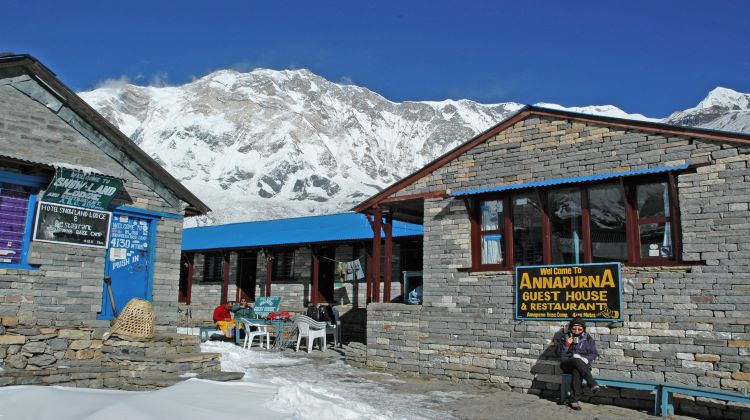
Accommodation:
The Annapurna Circuit offers a range of accommodation options, from basic teahouses to more comfortable lodges. The variety of accommodations ensures that trekkers can find suitable lodging based on their preferences and budget.
– Teahouses: Basic lodges that provide essential amenities such as beds, food, and hot drinks. Teahouses are scattered along the trek and offer a cozy, local experience.
– Lodges: More comfortable lodges are available in popular stopping points like Manang, Jomsom, and Muktinath. These lodges offer additional amenities and better comfort, including private rooms and hot showers.
Facilities:
– Basic to Comfortable: Facilities range from basic in the lower regions to more comfortable in the higher altitude areas. Amenities improve as you ascend, but basic services are available throughout the trek.
– Food and Drink: Local teahouses offer a variety of traditional Nepali dishes, such as dal bhat and momos. Some lodges also provide western food options, including pasta and pancakes.
Everest Base Camp: Basic but Essential
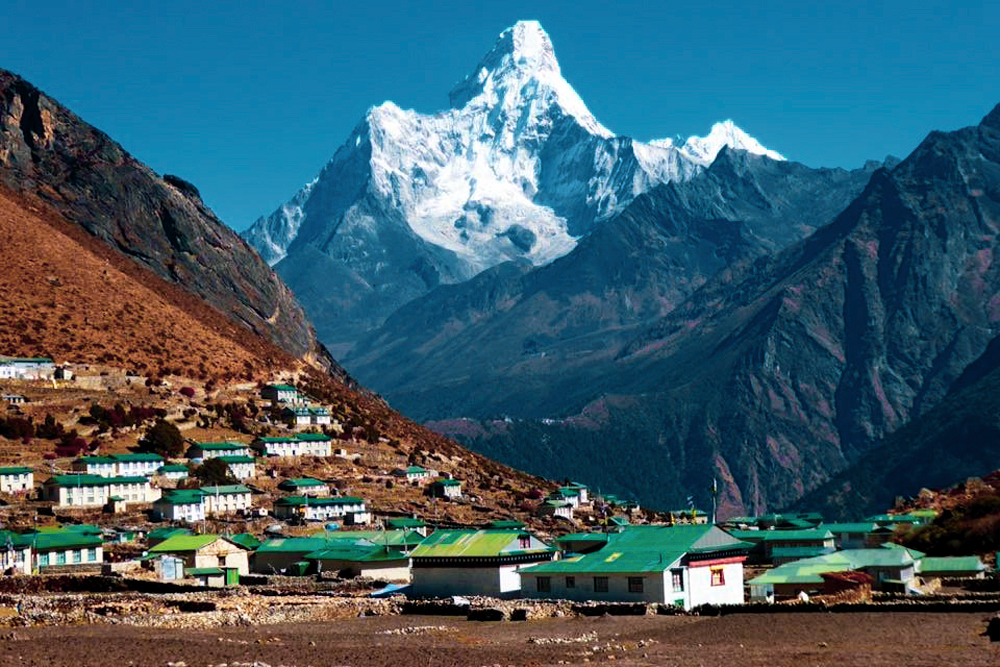
Accommodation:
Accommodation on the Everest Base Camp trek is primarily in teahouses and lodges. The facilities are basic but sufficient for the needs of trekkers. As you ascend, the accommodations become simpler, with fewer amenities available higher up.
– Teahouses: Provide essential amenities such as beds, food, and common areas. The teahou’ses offer a basic level of comfort and warmth, which is crucial in the high-altitude environment.
– Lodges: Basic lodges are available at key stopping points, including Namche Bazaar, Dingboche, and Gorak Shep. These lodges offer a place to rest and refuel before continuing the trek.
Facilities:
– Limited Facilities: Facilities become more basic as you ascend, with fewer modern conveniences. However, essential services such as food and lodging are available at key points along the route.
– Food and Drink: Local cuisine is available, with traditional dishes such as dal bhat and noodle soup. Western food options may be limited, particularly at higher altitudes.]
Cost and Logistics
Annapurna Circuit: Affordability and Accessibility
Cost:
The Annapurna Circuit is generally more affordable compared to the Everest Base Camp trek. The costs associated with permits, daily expenses, and transportation are lower, making it a more budget-friendly option for trekkers.
– Permits: The Annapurna Conservation Area Permit (ACAP) and the TIMS (Trekkers’ Information Management System) card are required. These permits are relatively inexpensive and can be obtained in Pokhara or Kathmandu.
– Daily Expenses: Meals and accommodation are relatively inexpensive. Prices for teahouses and lodges are reasonable, and the cost of food is lower compared to more remote regions.
Logistics:
– Access: The trek is accessible from various starting points, including Besisahar and Pokhara. Multiple transportation options, such as buses and jeeps, are available for reaching the trailhead.
– Permits and Regulations: Obtaining permits is straightforward, and the regulations are relatively easy to follow. Permits can be acquired with minimal bureaucratic hassle.
Everest Base Camp: Higher Costs and Complex Logistics
Cost:
The Everest Base Camp trek is more expensive due to higher permit fees, flight costs, and increased daily expenses. The overall cost can add up quickly, especially with the need for a flight to Lukla and the higher cost of services in remote areas.
– Permits: Requires the Sagarmatha National Park Permit and the TIMS card. The permit fees are higher compared to the Annapurna Circuit, and additional costs may apply for special permits if trekking in certain restricted areas.
– Daily Expenses: Higher costs for meals and accommodations, particularly in remote areas like Gorak Shep. Prices for food and lodging increase as you ascend, reflecting the logistical challenges of supplying these remote areas.
Logistics:
– Access: Requires a flight to Lukla, which adds to the cost and complexity. The flight is subject to weather conditions, and delays can impact the trek’s schedule.
– Permits and Regulations: Obtaining permits involves more bureaucracy and higher fees compared to the Annapurna Circuit. Special permits and regulations apply to ensure safety and manage the high volume of trekkers.
Which Trek is Right for You?
Choosing between the Annapurna Circuit vs. Everest Base Camp Trek depends on your preferences. The Annapurna Circuit offers diverse landscapes and cultural experiences, while the Everest Base Camp Trek provides iconic views of Everest. Your choice should align with whether you prefer cultural immersion and varied terrain or breathtaking vistas of the world’s highest peak.
Annapurna Circuit: Ideal for a Varied Experience
Best For:
– Variety Seekers: If you desire a trek that offers diverse landscapes and a gradual ascent, the Annapurna Circuit is ideal. The variety of environments and cultural experiences provide a comprehensive Himalayan adventure.
– Cultural Enthusiasts: For those interested in experiencing multiple ethnic cultures and traditional lifestyles, the Annapurna Circuit offers rich cultural encounters and unique insights into local customs.
Pros:
– Diverse Landscapes: The trek offers a wide range of scenic environments, from lush forests to high-altitude deserts. The changing landscapes provide a dynamic and varied trekking experience.
– Gradual Acclimatization: The gradual ascent and multiple acclimatization points help reduce the risk of altitude sickness and make the trek more manageable.
Cons:
– Longer Duration: The longer duration of the trek may be a constraint for those with limited time. The extended trek requires careful planning and commitment.
Everest Base Camp: Perfect for High-Altitude Adventurers
Best For:
– Altitude Challengers: If you’re looking for a high-altitude adventure with the iconic Everest experience, the Everest Base Camp trek is the perfect choice. The trek provides an exhilarating challenge and a sense of achievement.
– Sherpa Culture Enthusiasts: For those interested in immersing themselves in Sherpa culture and high-altitude mountaineering history, the Everest Base Camp trek offers deep insights and cultural experiences.
Pros:
– Iconic Views: The trek provides some of the most breathtaking views of Everest and other major peaks. The opportunity to stand at the foot of the world’s highest mountain is a significant highlight.
– Sherpa Culture: The trek offers a chance to explore the rich traditions and hospitality of the Sherpa people. The cultural experiences add depth to the adventure.
Cons:
– Strenuous: The higher altitude and rapid ascent can be physically demanding and require excellent fitness. Trekkers need to be prepared for the challenges of high-altitude trekking.
– Higher Costs: The trek is more expensive due to permits, flights, and daily expenses. The overall cost may be a consideration for those on a budget.
Side-by-Side Comparison : Annapurna Circuit Trek vs Everest Base Camp Trek
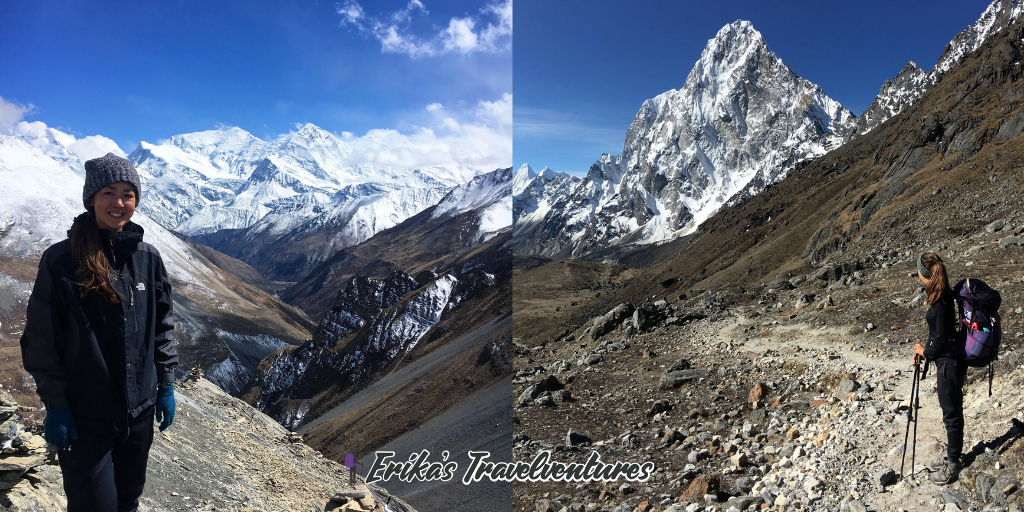
| Aspect | Annapurna Circuit | Everest Base Camp |
| 1.Trekking Experience and Terrain | ||
| Route Overview | Forms a loop around the Annapurna Massif with diverse landscapes | Follows the Khumbu Valley to the base of Mount Everest. |
| Altitude and Terrain | Includes subtropical forests, terraced fields, and high-altitude desert. | Characterized by rugged, rocky trails, glaciers, and high-altitude desert. |
| Highlights | Poon Hill’s sunrise views, cultural experiences in Manang, Muktinath Temple. | Poon Hill’s sunrise views, cultural experiences in Manang, Muktinath Temple. |
| 2. Duration and Difficulty | ||
| Duration | Typically 12 to 20 days | Generally 12 to 16 days |
| Difficulty | Moderate to challenging with gradual ascent and acclimatization days. | Challenging due to high altitude and rapid ascent. |
| Practical Tips | Good fitness required, preparation for varied terrain, and appropriate gear. | High cardiovascular fitness and proper high-altitude gear needed. |
| 3. Cultural and Scenic Highlights | ||
| Cultural Encounters | Interactions with Gurung, Thakali, and Tibetan communities. | Deep immersion in Sherpa culture and visits to Buddhist monasteries. |
| Scenic Highlights | Deep immersion in Sherpa culture and visits to Buddhist monasteries. | Iconic views of Everest, Khumbu Glacier, and Kala Patthar. |
| 4. Accommodation and Facilities | ||
| Accommodation | A range from basic teahouses to more comfortable lodges. | Primarily basic teahouses and lodges. |
| Facilities | Vary from basic to comfortable, with local and some western food options. | Limited, with essential services and traditional food. |
| 5. Cost and Logistics | ||
| Cost | Generally more affordable with lower permit fees and daily expenses. | Higher due to permit fees, flight costs, and increased daily expenses. |
| Logistics | Accessible from multiple points with straightforward permit processes. | Requires a flight to Lukla, with more complex and expensive logistics. |
| 6. Which Trek is Right for You | ||
| Best For | Those seeking varied landscapes, gradual acclimatization, and rich cultural experiences. | High-altitude adventurers and those interested in Sherpa culture. |
| Pros | Diverse environment and manageable altitude gain. | Iconic views and cultural immersion. |
| Cons | Longer duration may be challenging for those with limited time. | Strenuous high-altitude conditions and higher costs. |
| 7.Conclusion | ||
| Summary | Offers a varied trekking experience with gradual acclimatization and diverse landscapes. | Provides a high-altitude challenge with iconic mountain views and Sherpa cultural immersion. |
Some other difference between the Annapurna Circuit Trek vs Everest Base Camp Trek:
Distance:- The difference between the Annapurna circuit trek vs Everest base camp distance is evident in their starting points and the travel required to reach them. To get to the Annapurna Circuit, you would travel approximately 180 kilometers (112 miles) by road from Kathmandu to Besisahar. On the other hand, reaching Everest Base Camp involves a flight from Kathmandu to Lukla, covering about 140 kilometers (87 miles).
The direct distance between Everest Base Camp and the Annapurna Circuit’s starting point, Besisahar, is around 180 kilometers (112 miles). Despite this relatively short straight-line distance, the journey between these two treks involves different methods of transportation and routes, making it more complex than the direct distance might imply.
Cost:– The difference between the Annapurna circuit trek vs Everest Base camp price is significant. On average, the Annapurna Circuit Trek costs around $900 for a 14-day trek. In comparison, the Everest Base Camp Trek generally costs about $1,600 for a 13-day trek. However, these costs can vary depending on the travel agency or individual preferences.
Height:-The difference between Annapurna vs Everest height is substantial. Mount Everest, the highest peak in the world, stands at 8,848.86 meters (29,031.7 feet) above sea level. In comparison, Annapurna , which is the 10th highest peak, reaches an elevation of 8,091 meters (26,545 feet). This results in a height difference of 757.86 meters (2,486.7 feet) between the two mountains.
8. Conclusion
Both the Annapurna Circuit Trek and Everest Base Camp Trek offer extraordinary experiences, each with its unique set of rewards and challenges. The Annapurna Circuit Trek is perfect for those seeking a longer, more varied trek with gradual acclimatization and diverse landscapes. In contrast, the Everest Base Camp Trek provides an exhilarating high-altitude adventure with the chance to stand at the foot of the world’s tallest peak and immerse yourself in Sherpa culture.
When weighing the Annapurna Circuit Trek vs. Everest Base Camp Trek, consider what aligns best with your trekking goals and physical readiness. The Annapurna Circuit Trek offers a broader range of environments and cultural experiences, while the Everest Base Camp Trek focuses on high-altitude challenge and iconic views. No matter which trek you choose, both will provide unforgettable experiences and memories to last a lifetime. Consider your physical readiness, the type of experience you seek, and logistical factors to make the best decision for your Himalayan adventure in 2024.
Happy trekking !

